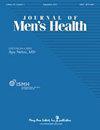FOXD2-AS1抑制前列腺癌的增殖和迁移:体外和体内研究
IF 0.6
4区 医学
Q4 Medicine
引用次数: 0
摘要
FOXD2相邻对链RNA 1 (FOXD2- as1)是一种长链非编码RNA (lncRNA),在许多癌细胞中表现出特异性升高。大量研究表明FOXD2-AS1促进细胞增殖、迁移和侵袭。然而,FOXD2-AS1导致前列腺癌(PCa)的确切机制尚不清楚。因此,我们旨在探讨FOXD2-AS1对PCa生长的影响。最初,在前列腺癌细胞(PC-3、DU145和Lncap)中,FOXD2-AS1的表达高于前列腺正常细胞系RWPE2。然后,用shFOXD2-AS1、sh-Numerical Control (shNC)或FOXD2-AS1转染PC-3细胞,以评估FOXD2-AS的影响。采用细胞计数试剂盒-8 (CCK8)和5-乙基-2′-脱氧尿苷(EDU)检测细胞生长,Transwell检测细胞侵袭和迁移,结果表明FOXD2-AS1沉默可抑制PC-3细胞的增殖、迁移和侵袭。此外,我们通过分析lncRNA、miRNA和蛋白的相互作用位点,发现FOXD2-AS1与miR-206/程序性细胞死亡蛋白10 (PDCD10)结合。然后,通过双荧光素酶报告基因检测和RT-qPCR证实了这些相互作用能力,提示FOXD2-AS1可以通过抑制miR-206上调PDCD10的量。此外,我们还评估了FOXD2-AS1沉默在PCa癌变中的作用。体内实验中,shFOXD2-AS1能显著降低PCa的体积和重量。这些发现表明FOXD2-AS1沉默有效地阻碍了前列腺癌的进展。综上所述,在PCa中观察到FOXD2-AS1的上调,FOXD2-AS1的下调可以通过靶向miR-206上调PDCD10的表达来缓解肿瘤的发展。本文章由计算机程序翻译,如有差异,请以英文原文为准。
FOXD2-AS1 inhibits the proliferation and migration in prostate cancer: an in vitro and in vivo study
FOXD2 Adjacent Opposite Strand RNA 1 (FOXD2-AS1), a long noncoding RNA (lncRNA), exhibits specifically elevated in numerous cancerous cells. Numerous studies have shown that FOXD2-AS1 encourages cellular proliferation, migration and invasion. Nevertheless, the exact mechanism through which FOXD2-AS1 contributes to prostate cancer (PCa) remains unclear. Consequently, we aimed to explore the implications of FOXD2-AS1 on the growth of PCa. Initially, an elevation of FOXD2-AS1 observed in PCa cells (PC-3, DU145 and Lncap) than the prostate normal cell line RWPE2. Then, PC-3 cells were tranafected with shFOXD2-AS1, sh-Numerical Control (shNC) or FOXD2-AS1 to assess the implications of FOXD2-AS. Cell growth was measured with cell counting kit-8 (CCK8) and 5-ethynyl-2′-deoxyuridine (EDU) assays, and cell invasion and migration were assessed by Transwell assays, which demonstrated that FOXD2-AS1 silence impeded proliferation, migration and invasion of PC-3 cells. Additionally, we discovered that FOXD2-AS1 bonded with miR-206/programmed cell death protein 10 (PDCD10) trough analyzing the interaction sites of lncRNA, miRNA and protein. Then, these interaction abilities were confirmed by dual-luciferase reporter assays and RT-qPCR, suggesting FOXD2-AS1 could upregulate the amount of PDCD10 through suppressing miR-206. Furthermore, the role of FOXD2-AS1 silencing on PCa carcinogenesis were assessed. In vivo experiment, shFOXD2-AS1 led to a notable reduction in both the size and weight of PCa. These findings indicated that FOXD2-AS1 silencing effectively hindered the progression of prostate cancer. In conclusion, the upregulation of FOXD2-AS1 was observed in PCa, and the knockdown of FOXD2-AS1 could alleviated tumor development by targeting miR-206 to upregulate PDCD10 expression.
求助全文
通过发布文献求助,成功后即可免费获取论文全文。
去求助
来源期刊

Journal of Men's Health
Medicine-Urology
CiteScore
0.70
自引率
28.60%
发文量
153
审稿时长
10 weeks
期刊介绍:
JOMH is an international, peer-reviewed, open access journal. JOMH publishes cutting-edge advances in a wide range of diseases and conditions, including diagnostic procedures, therapeutic management strategies, and innovative clinical research in gender-based biology. It also addresses sexual disparities in health, life expectancy, lifestyle and behaviors and so on. Scientists are encouraged to publish their experimental, theoretical, and descriptive studies and observations in as much detail as possible.
 求助内容:
求助内容: 应助结果提醒方式:
应助结果提醒方式:


